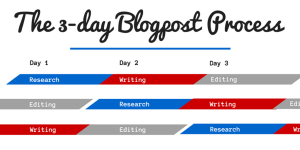 Is your website designed with your ideal customer and prospect in mind?
Is your website designed with your ideal customer and prospect in mind?
User experience (UX) is a complex science that sits at the intersection of technology, marketing, psychology, content and more. Optimizing for usability requires an in-depth understanding of how modern consumers engage with websites, and a big part of that is learning how to avoid the most common user experience mistakes:
1. Lack of True Mobile Optimization
The experts at UserTesting report that a lack of a mobile-friendly site is often the most common UX mistake. However, too few brands are truly designing around how mobile web users interact with technology. Your site needs to be easy to navigate, avoid extraneous zooming requirements and omit long landing page forms in order to fit the unique expectations of modern mobile users.
Pro tip: Making sure phone numbers on your website are “touchable” on a smartphone (so people can touch-to-call) is extremely important. You also want to consider that text needs to be larger on a phone, and images need to be pared back for a better experience.
2. Failing to Understand the Importance of Content
To be clear, UX isn’t just about your website’s interface. Avoiding user experience mistakes requires an understanding of prospect and customer priorities as well. According to strategist Jerry Cao, users put the following order of priority on website aspects:
- Content Structure
- Interactive Design
- Visual Design
Even the most beautiful videos won’t help your prospects if they’re not ordered logically. Information flow and availability should always be top priority.
Pro tip: Answering prospect questions early on your website and addressing the information they need up front is much more important that telling them about your company. Always think about providing a next step — a link to a related page where someone can read more and avoid “dead ends.”
3. Poor Conversion Pathways
If your website visitors are performing initial research on your product, they’re on a mission. UX specialist Morgan Brown recommends considering user “flows,” or simplifying the steps a user needs to take to convert. Minimize extraneous steps, and make it as easy as possible for first-time visitors to keep in touch.
Pro tip: Use Google Analytics’ Behavior Flow report to show common pathways through your website, and identify where people are abandoning.
4. Slow-Loading Pages
Your site page load times have a significant impact on your brand’s profitability. Every one second of delay in loading time decreases customer satisfaction by 16 percent. There are a number of free tools for measuring average page load time, and a huge array of factors that can affect site speed. For example, your site could be bogged down by your database, embeds, tracking codes or other aspects.
Pro tip: Your content management system and web hosting plan impact your website load time. Improving these two things can improve not only your page load time, but search engine optimization, too, as load time is a ranking factor.
5. Low-Quality Images
Creating unique, high-quality visuals is a top priority. Investing in a photo shoot or swapping out low-quality pictures on your website can significantly increase your visitors’ experience. Additionally, marketing researchers have found that photos of actual employees perform better than stock images. They’re superior at establishing a trust factor, which is critical to convert website visitors into leads.
Pro tip: You don’t necessarily have to hire a professional photographer to get great photos, but put some photos of your office, locations and people on the website to make it your own. We covered the topic of website photography in a blog, too.
Fascinated by the idea of creating a user-friendly website? There’s really more to designing a website than a bunch of nice-looking visuals. When we design websites, we think of the people that will be using them and what information they will be seeking. We think of the path we want them to take deliberately through the website. We consider what will help them to solidify trust in your organization. Don’t you want that type of website, too? Start today by having your website graded at no cost to see what your opportunities are.
Digital & Social Articles on Business 2 Community
(126)
Report Post







